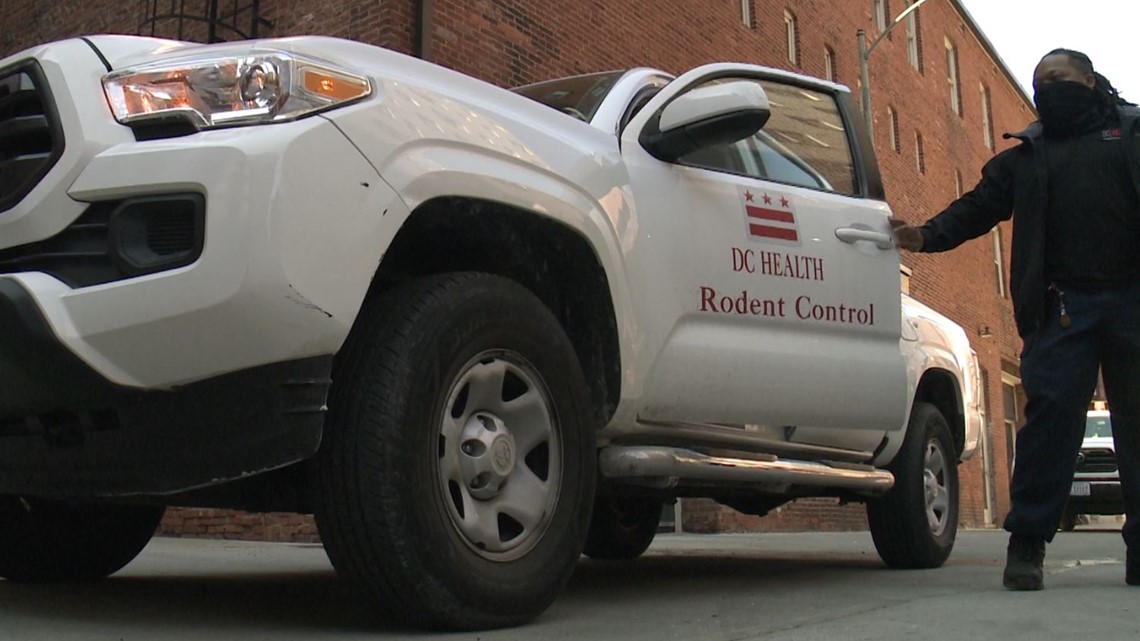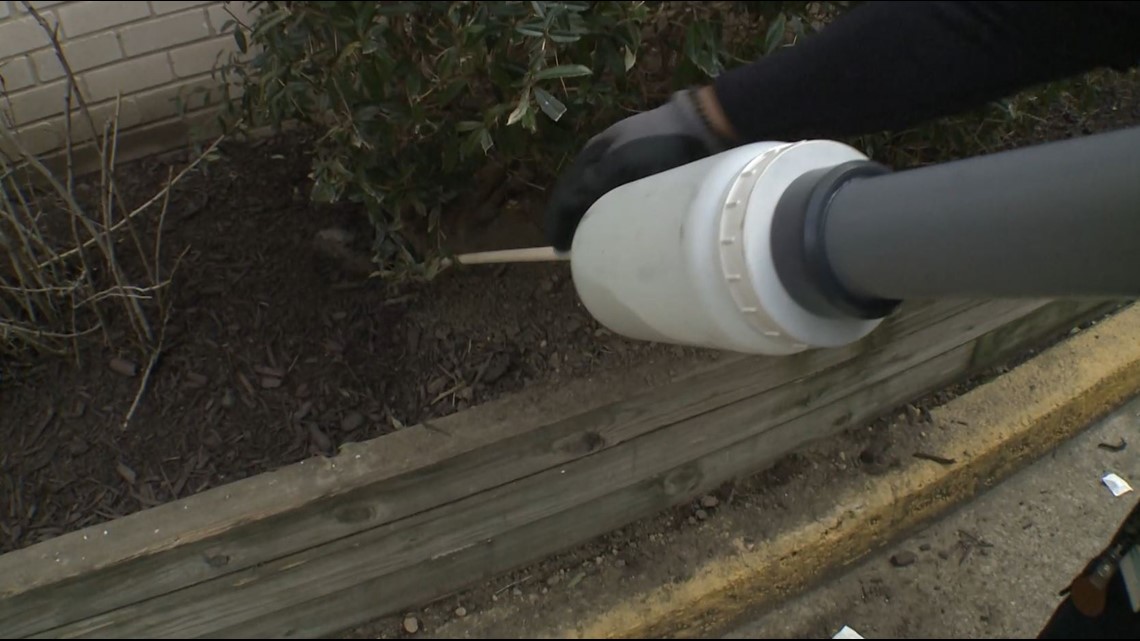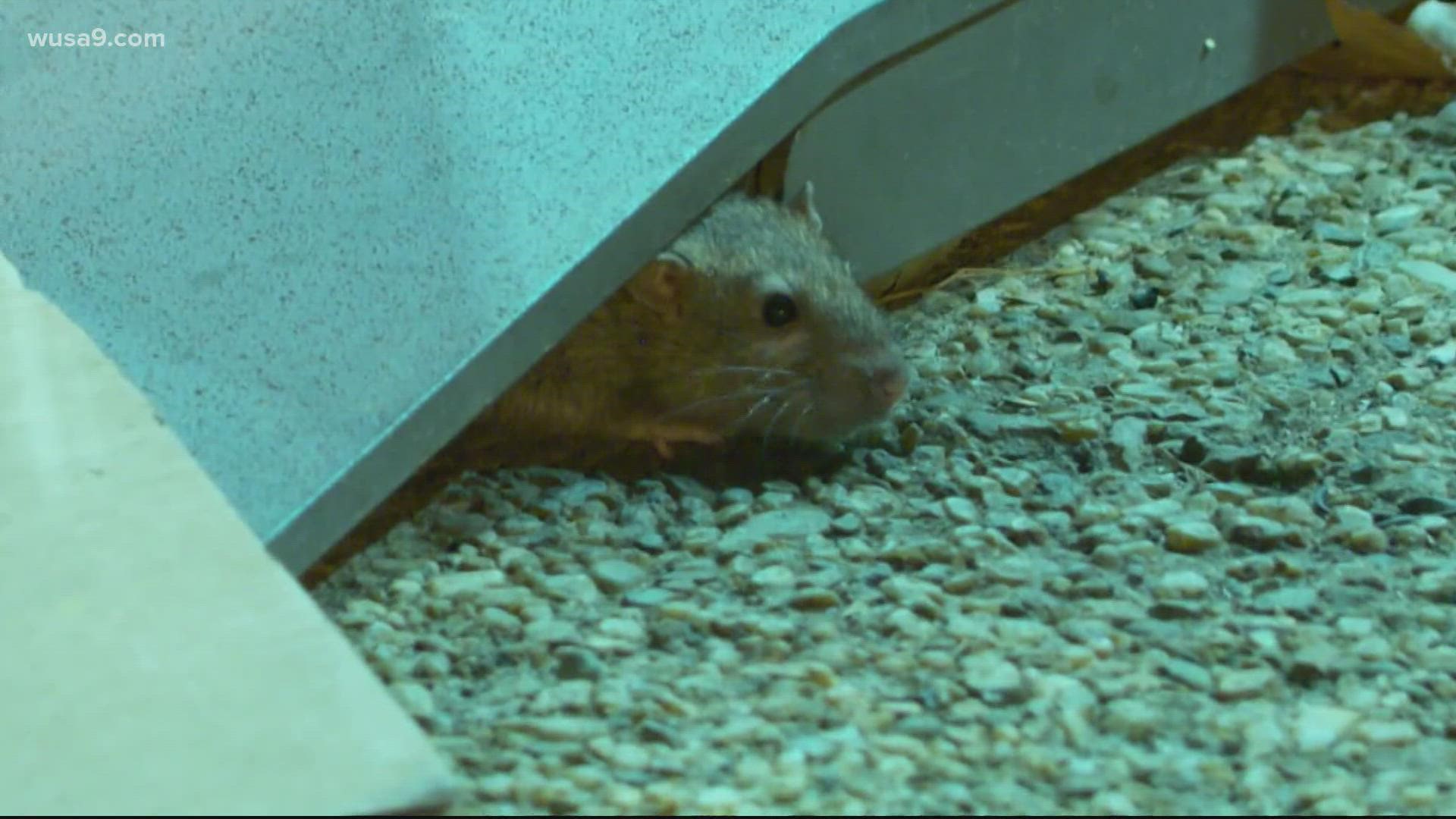WASHINGTON — Rats are savvy, social, scary to some and seemingly everywhere. “There’s been a lot, enough to make me run,” D.C. resident Michael Pratt said.
The DC Health Department's Rodent Control division is still trying to make the rats run, including Andre Pitman, who’s been on the team for four years. “Just got to think like a rat,” Pitman said.
Pitman and his crew of 18 are responding to dozens of calls each day, trying to figure out where the rats are nesting.
At one apartment complex in Northwest, there was overwhelming evidence of a major rat infestation.
Pitman instantly noticed several large holes leading to a network of rat burrows. He said based on the number and size, there may have been at least 20 rats living underground at that one location near Logan Circle.


To quell the problem, the rodent patrol injected a tracking powder into the burrows. "Rodents groom themselves. All we need to do is get on their coat,” Pitman explained. "Once they groom themselves, they digest and it kills."
That's just one method. They also cover the burrows in some areas and suffocate the rats with gas. “You got to stay ahead of them. They get pretty innovative,” Pitman added.


For years, the city's been working to come up with a solution to drastically reduce the rat population, from heavily touted dry ice to bait boxes and even feral cats. Still, the rats are elusive and evolving.
D.C. residents, desperate for a fix, were even cheering on the snowy owl spotted near Union Station, known to feast on rats.
D.C. Health’s Rodent and Vector Control Program Manager, Gerard Brown said, the agency is looking for the perfect solution. "If there's something new, we're open for it. We will try it. Some things work. Some things don't,” Brown said.
Brown said last year, more than 11,300 people called 311 complaining about rats. That's a big uptick from the roughly 7,500 calls that were answered in 2020, as well as the 6,048 answered in 2019 and 6,223 in 2018.
The department recently added four members to its rodent patrol crew to keep up with the requests.
"The rats since the pandemic have become desperate and unpredictable,” Brown said.
Brown added that there are various reasons for this increase. One problem is that rats reproduce rapidly. One rat is capable of birthing at least 100 pups every year, according to D.C. Health.
Additionally, people and businesses are disposing of trash improperly. With the pandemic and changes in routines, more people are home and tossing out more trash. “That’s what rats survive off of, our garbage," Brown said. "We don't have enough rodenticide if the habitat doesn't change.”
Along with chemical treatments to reduce the rat population, Pitman and other D.C. Health veterans are helping people by pinpointing the problems in various neighborhoods attracting rats.
D.C. Health also issued more than 200 fines last year to people and businesses for unsanitary conditions. The citations totaled close to $166,000.
"We have to work together,” Brown concluded.

